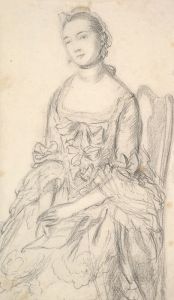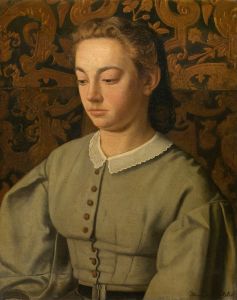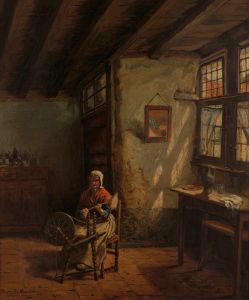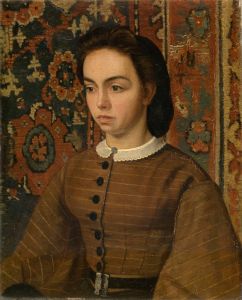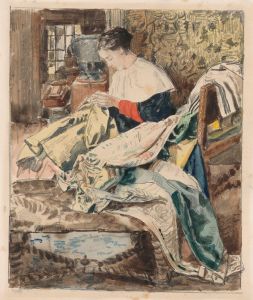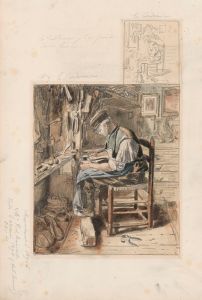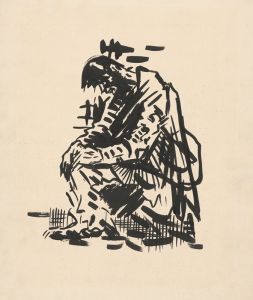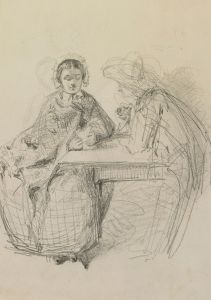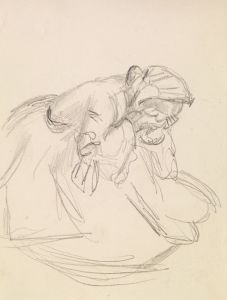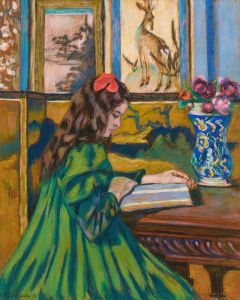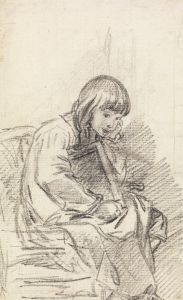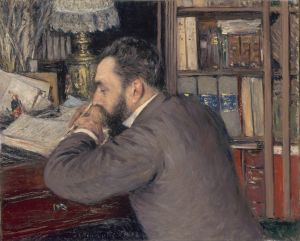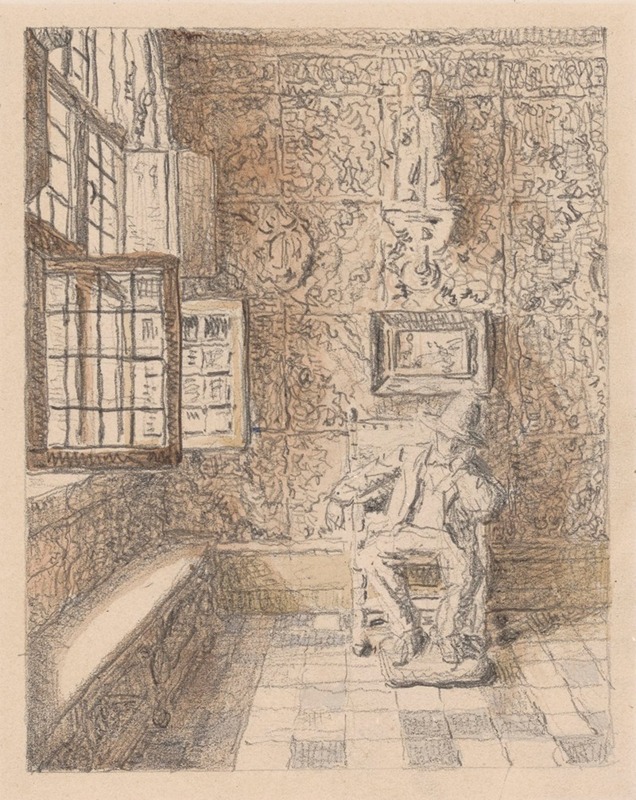
The Man in the Chair
A hand-painted replica of Henri de Braekeleer’s masterpiece The Man in the Chair, meticulously crafted by professional artists to capture the true essence of the original. Each piece is created with museum-quality canvas and rare mineral pigments, carefully painted by experienced artists with delicate brushstrokes and rich, layered colors to perfectly recreate the texture of the original artwork. Unlike machine-printed reproductions, this hand-painted version brings the painting to life, infused with the artist’s emotions and skill in every stroke. Whether for personal collection or home decoration, it instantly elevates the artistic atmosphere of any space.
Henri de Braekeleer was a notable Belgian painter known for his detailed and atmospheric interior scenes. One of his works, "The Man in the Chair," exemplifies his skill in capturing the quiet, contemplative moments of everyday life. Painted in the late 19th century, this artwork reflects de Braekeleer's interest in the interplay of light and shadow, as well as his ability to convey a sense of stillness and introspection.
"The Man in the Chair" depicts a solitary figure seated in a modest, dimly lit room. The man, dressed in simple attire, is absorbed in thought, contributing to the painting's introspective mood. De Braekeleer's attention to detail is evident in the careful rendering of the room's furnishings and the play of light across various surfaces. The subdued color palette, dominated by earthy tones, enhances the painting's tranquil atmosphere.
Henri de Braekeleer was part of a family of artists; he was the nephew of the renowned painter Ferdinand de Braekeleer the Elder. Henri's work is often associated with the Realist movement, which sought to depict subjects truthfully and without idealization. His paintings frequently focus on the interiors of homes and other everyday settings, capturing the essence of 19th-century Belgian life.
De Braekeleer's technique involved meticulous brushwork and a keen observation of his surroundings. He was particularly adept at portraying the effects of light, which he used to create depth and mood in his paintings. In "The Man in the Chair," the light filtering through a window softly illuminates the scene, highlighting the textures of the man's clothing and the surfaces around him.
Throughout his career, de Braekeleer faced personal challenges, including periods of mental illness, which at times affected his ability to work. Despite these difficulties, he remained committed to his art, and his paintings continued to be well-regarded for their technical proficiency and emotional depth.
"The Man in the Chair" is representative of de Braekeleer's broader body of work, which often explores themes of solitude and reflection. His paintings are appreciated for their ability to capture the quiet dignity of everyday life, offering viewers a glimpse into the private, contemplative moments that define human experience.
Today, Henri de Braekeleer's works, including "The Man in the Chair," are held in various collections and continue to be studied for their contribution to the Realist tradition in Belgian art. His paintings are celebrated for their ability to convey the beauty and complexity of ordinary scenes, making them enduring examples of 19th-century realism.





